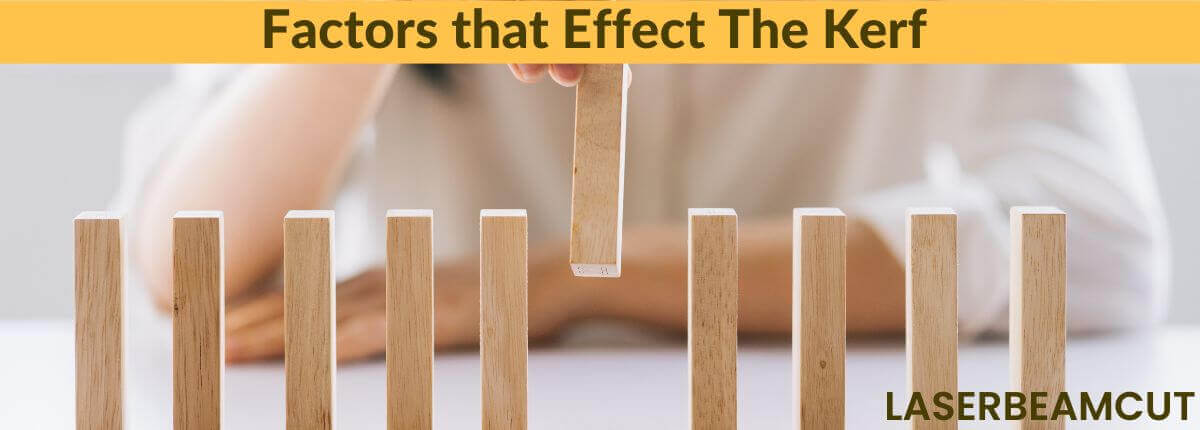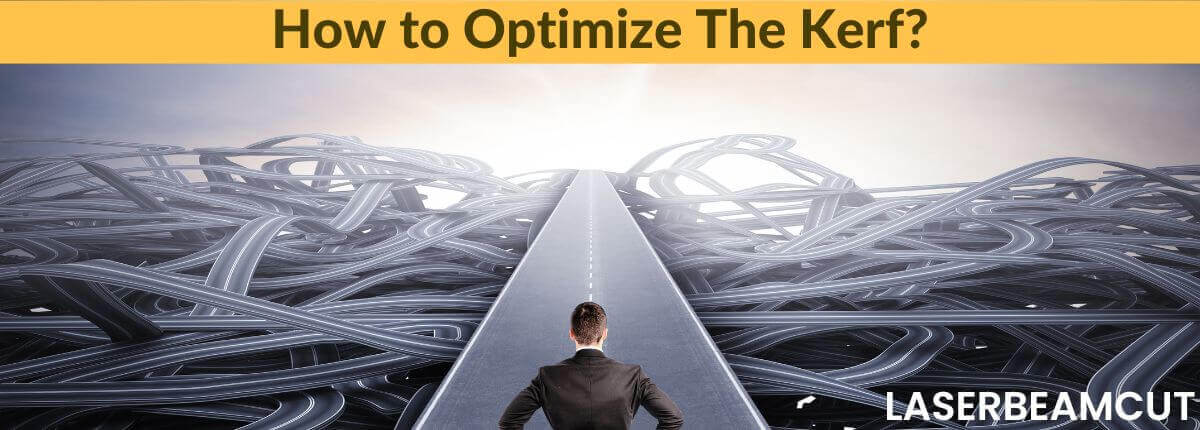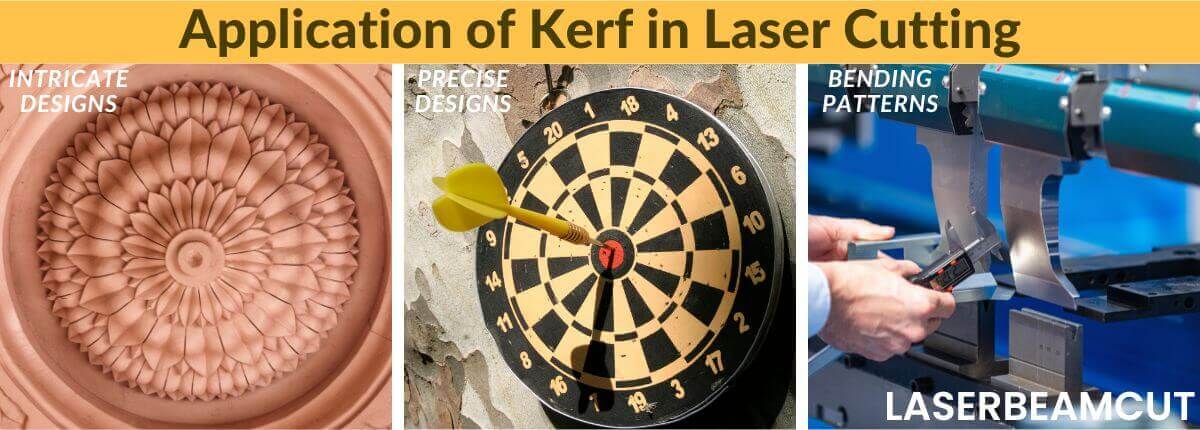Precision and accuracy are essential in laser cutting, which allows you to cut a wide variety of materials. A critical aspect of laser cutting is the kerf or width of the cut.
The Final product depends on the width of the cut, so understanding how to optimize the kerf is necessary for every manufacturer and designer.
In this article, we will explore kerf in more detail, including what it means and how it is affected by various factors and techniques for minimizing and achieving a consistent kerf.
What is The Meaning of Kerf?
In cutting and machining, kerf refers to the width of material cut away during the cutting process. It is the size of the cutter tool or the beam.
For example, a saw blade’s kerf is the width of the blade when woodcut with a saw. In laser cuttings, the kerf is the width of the cut made by the laser beam.
Understanding the kerf is crucial because it affects the precision of the cut and the final appearance.
Factors that Affect the Kerf in Laser Cutting
Several factors can affect the kerf in these cuttings, including:

Laser Power:
The power of the laser beam is one of the main factors that impact the kerf. A higher power beam will produce a thick kerf, while a lower power beam will create a thin kerf.
Cutter Speed:
The speed at which the laser beam moves across the material also affects the cut width. A higher cutter speed will produce a thin kerf, while a lower speed stake will create wider size cuttings.
Focusing Lens:
The size and quality of the lens used to focus the laser beam can also affect the kerf. If you want a narrower kerf, use a smaller lens; if you want a wider cut, use a larger lens.
Material Properties:
The properties of the material cuttings, such as their thickness, hardness, and composition, can also affect the kerf. Some materials may require a higher laser power or cutter speed to achieve a specific kerf width.
Kerf angle:
The angle of the beam can impact the cut width and shape. If you want a narrower kerf, use a steeper angle; if you want a wider cut, use a shallower angle.
It’s worth noting that these factors are interrelated, and changes in one part may affect the others, so it’s crucial to change accordingly to achieve the desired results.
How to Optimize the Kerf
Achieving precise cuts and a desired outcome in cuttings requires optimizing the kerf. Adjusting the laser power, changing the cutter speed, using a smaller focusing lens, and choosing the accurate material can help to minimize and achieve a consistent kerf.

Techniques for minimizing the kerf
Adjusting the laser power:
It is possible to narrow the kerf by reducing the laser power. However, it’s crucial to remember that reducing the laser power too much can result in a less precise cut or damage to the material.
Changing the cutters speed:
In addition, reducing the cutter speed can result in narrower kerfs. However, too much speed increase can result in a less precise cut or damage to the material.
Using a smaller focusing lens:
A smaller lens will help focus the laser beam more precisely, resulting in a narrower kerf.
Choosing the appropriate material:
Different materials have different properties that can affect the kerf. Choosing the appropriate materials for the job can help to minimize the kerf and achieve more precise cuts.
Best practices for achieving a consistent kerf
Test cuts:
Before starting a large job, it’s essential to make test cuts to determine the optimal settings for the specific material and design.
Cutters Machine software:
Some software allows you to control the kerf width by adjusting the machine power, cutter speed, and other parameters. It can also help to optimize the kerf for specific materials.
Keep the lens clean:
It is crucial to keep the lens clean to ensure that the cuts are consistent. A dirty lens can result in an inconsistent kerf.
Use consistent and high-quality materials:
The use of high-quality materials can help to achieve a more consistent kerf and improve overall precision.
Maintenance of the cutter machine:
Regular maintenance of the cutter machine, including cleaning and aligning the optics, can help to maintain consistent kerf-widths over time.
Applications of kerf in Laser Cutting
It is possible to create intricate designs and unique textures through kerf-cuttings. Understanding how to optimize the kerf can open up new possibilities for designers and manufacturers.

Intricate designs:
It can create intricate and detailed designs, such as inlays, engravings, and cut-outs. Optimizing the laser power, cutter speed, and other parameters make it possible to create fine details with high precision.
Precision cuttings:
The cuttings can also produce precision cuts, such as manufacturing electronic components, medical devices, and aerospace parts. It is possible to achieve high precision and consistency by optimizing the kerf, which is crucial for these applications.
Bending patterns
It is a technique that uses the kerf made by laser cutters to bend the material in a specific shape. By using this technique, it is possible to create a wide variety of patterns and designs, such as:
- Zigzag patterns
- Wave patterns
- Spiral patterns
- Basket weave patterns
- Box patterns
- Customizable patterns
The specific pattern will depend on the materials and the desired final shape.
Conclusion (Kerf in Laser Cutting)
I hope now you are well aware of kerf in laser cutting. In conclusion, the final product of laser cutting depends on the width of the cuts. Understanding the kerf, its properties, and how it is affected by various factors is crucial for achieving the desired results.
By optimizing the kerf, you can achieve a high degree of precision and consistency in your designs. It is crucial for intricate designs, precision results, and creating unique textures.
Additionally, experimenting with different kerf techniques and adjusting the kerf angle can open new possibilities for designers and manufacturers. It’s important to remember that the kerf is affected by multiple factors, and it’s necessary to consider all of them while making adjustments to achieve the desired results.
Overall, the kerf is a powerful tool for trimming to create a wide range of effects.
FAQs (Frequently Asked Questions)
1. What is a laser kerf calculator?
A kerf calculator is a tool that calculates the kerf width based on the parameter of the lasers used in specific material cuttings.
2. What is laser kerf bending?
Lasers kerf bending is a technique of using the kerf made by the cutters to bend materials in a specific shape.
3. What is the comparison between thin kerf VS full kerf?
Thin kerf refers to a narrow kerf made by the cutter tool or a beam, while full kerf refers to a wider width of the cut made by the cutter tool. Precision requires thin kerf-cutting tools, while wide margins need thick kerf-cutting tools.
4. What is laser kerf width?
Lasers kerf width refers to the width of the scrape made by the beams on a material during the cuttings process.

